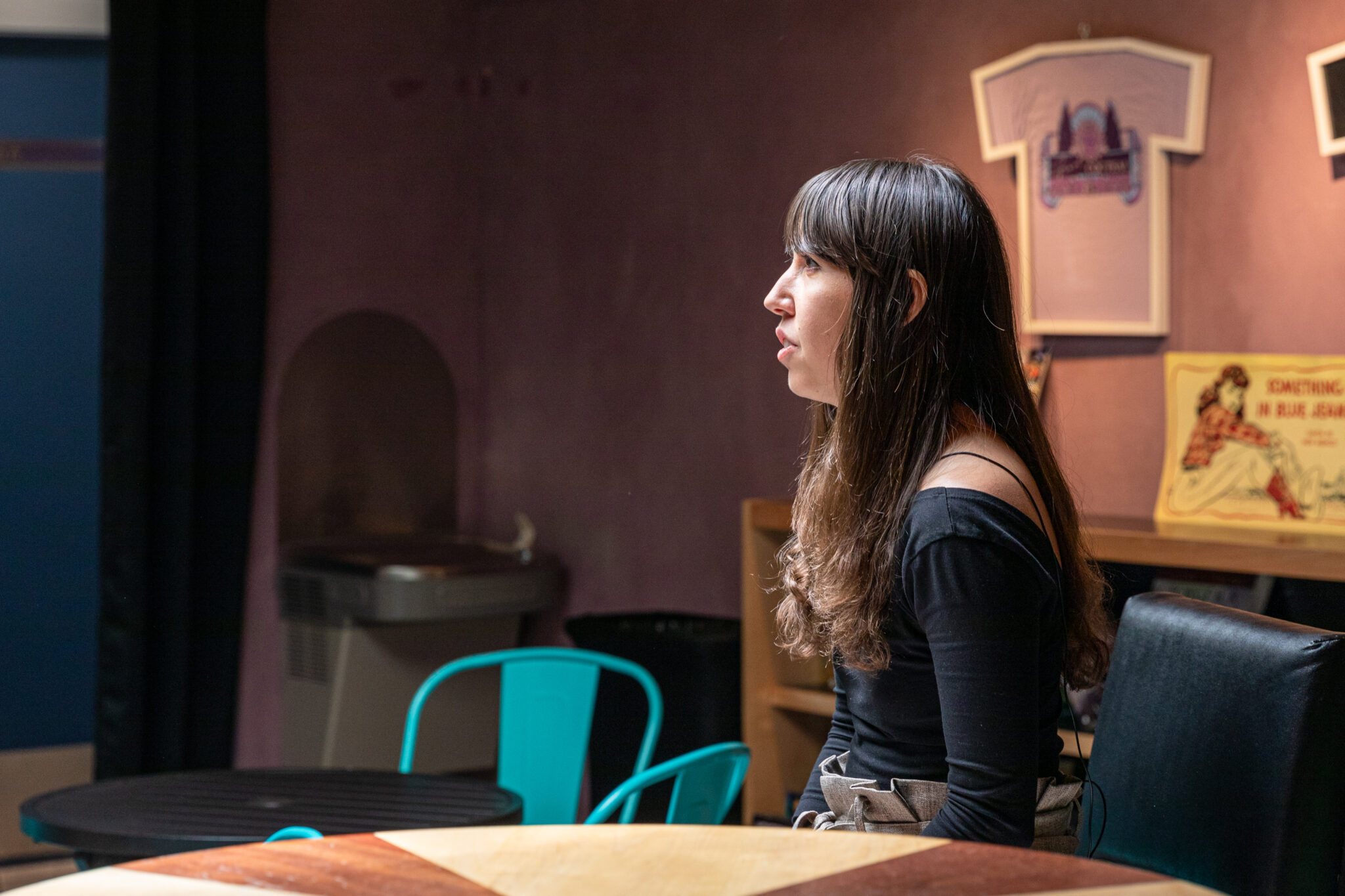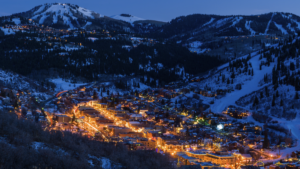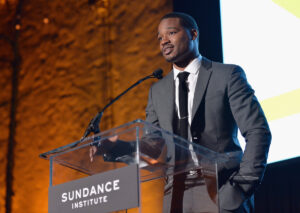By Katie Arthurs
Growing up, many of us had the school rhyme “In 1492, Columbus sailed the ocean blue” fed to us along with heaps of other information about Christopher Columbus “discovering” America. However, this false fairytale of colonialism in order to explain why we honor him by celebrating Columbus Day leaves out the devastating history of colonization that came with Columbus and his ships.
This history continues to impact Indigenous communities today. Although we cannot go back in time and yeet Columbus off of the continent, we can work to dismantle the false narrative surrounding him.
Through Indigenous Peoples’ Day — celebrated in lieu of Columbus day — we aim to honor Native peoples and move beyond outdated narratives. We honor the rich history, culture, and joy of contemporary Indigenous people and communities, as well as the hope for future generations to come.
In recognition of Indigenous Peoples’ Day, we asked 2022 Sundance Native Lab fellows Taietsarón:sere LeClaire and Tiare Ribeaux to reflect on the significance of this holiday, and share their hopes for the future from an Indigenous perspective.
What are your thoughts on Indigenous Peoples’ Day? What does it mean to you and your community/family (if it has any meaning at all). Do you celebrate? If so, how?
Taietsarón:sere: I’m not the biggest fan of distilling cultural celebrations/acknowledgments into a single day. I do see it as progress [and] I understand how it helps bring people into the conversation who wouldn’t normally be aware of it. While I don’t “celebrate” it I like to think of every day where we as a people are thriving as an Indigenous people’s day.
Tiare: More visibility and acknowledgment for Indigenous folks is always welcome and we need more holidays in general, but, to be honest, it almost feels like a token band-aid holiday until Columbus Day is completely off of every calendar or we’re pulling down all his monuments.
It feels similar to the way land acknowledgements are done…like it could be in a building built on mass graves and they’re holding some conference — that is not in any way including Indigenous folks — and they make a quick land acknowledgment and think they’ve done their duty…That’s just not how it works. Land acknowledgements can be problematic as they glaze over what really needs to happen: the invitation and real engagement with the tribe on the land that is being occupied. As always, there is more work that needs to be done. I’m just waiting for it to be Indigenous year…every year…forever. At least that’s what’s on my calendar.
Growing up, did you celebrate Columbus Day in school? What did it entail and did you have any thoughts about it as an Indigenous child?
Taietsarón:sere: Because my education was in Canada (with its bucket or atrocities courtesy of the crown) Columbus Day itself was something we have a communal middle finger to. Just growing up around my culture, and my people, on my reservation you learn early about the truths around these holidays and to be vocal against it.
Tiare: I honestly don’t think so or I can’t remember it, thankfully. I grew up on O’ahu, and went to Kamehameha Schools which aimed to prioritize Hawaiian culture.
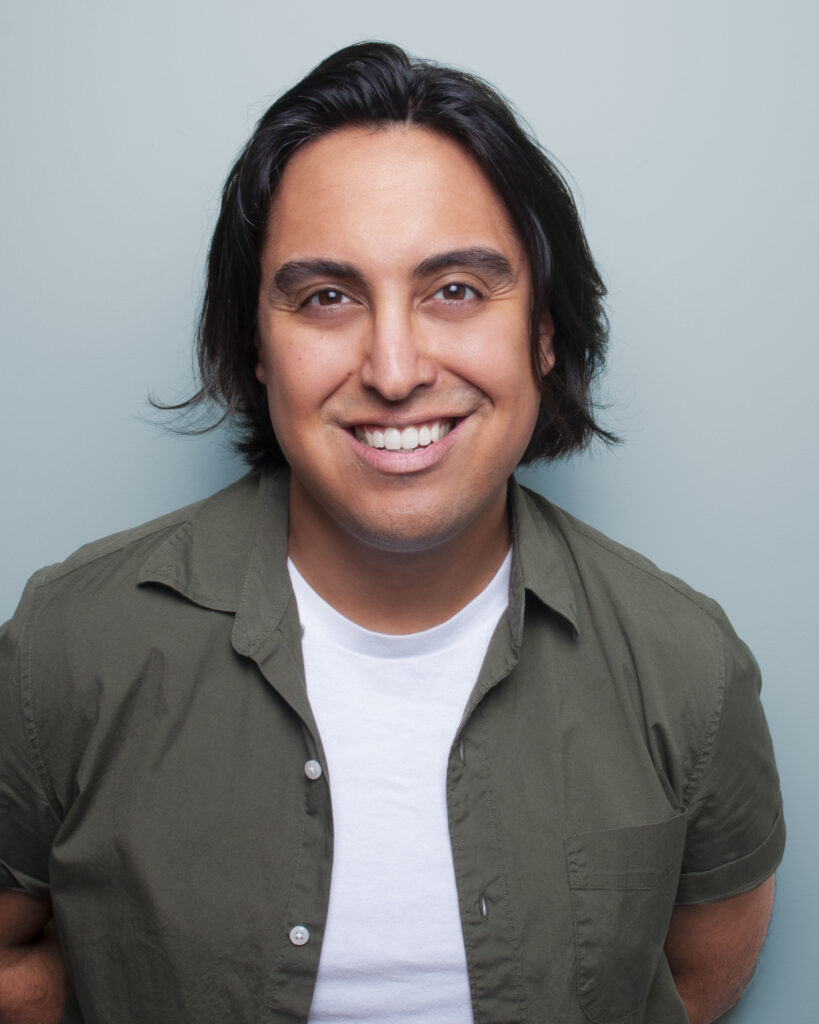
So often there is focus on the past and historical trauma (rightfully so), but how would you describe Indigenous joy?
Taietsarón:sere: Indigenous joy for me is when our culture, both traditional or pop culture–related, is just simply existing. Without having to explain itself.
Tiare: Indigenous joy is found sometimes in creating work and creative projects because the work often brings the community together. For instance, when I made my last two short films in Hawai’i, I was blessed to bring Kānaka from all different backgrounds together, and creating the work together was euphoric. My most recent short Pō’ele Wai focuses on a weaver, and to reacquaint myself with the practice I would go to community Hala prep. I learned to weave for a bit in middle school but was never involved with the prep. There’s so much work that goes into preparing the lau (leaves): picking, cleaning, rolling, cutting…before ulana (weaving) can even happen. But we found joy in coming together as a community to do the work, talk story, tell jokes, sing songs, and eat food. I realized that to ulana is to weave all that joy together in whatever we make —- a large moena (mat), whatever. The joy shared over months and the pilina (bond) that is woven during that time. It was nourishing to be together even if we were only cleaning lau (leaves); also because it allowed us to be engaged in a practice that our ancestors were engaged in, and imagine them touching the same leaves and being in that space with us.
Honestly for me, who has lived off-island on the continent for over a decade, really any time I come together with other Kānaka I share a bond with it is joyous, and I never take it for granted for a day. [I] find joy in the small things: whether we’re sharing a meal or singing karaoke in ‘Ōlelo Hawai’i or walking together anywhere on our land, are together in the ocean, or sitting and reading together at a table in silence. I feel the same way with the inter-tribal community, and I still reflect on the joy of all of the fellows from different nations coming together at Native Lab, and hanging out with folks after the workshops into the night hours. I can’t even remember that much of what we talked about, but I just remember that feeling of warmth that bubbled up inside my body, that I saw in everyone’s bodies…erupting in laughter and smiles, and that feeling of finding home together with each other even though we weren’t on our home lands. Something magical happens when Natives come together. That’s just how it is.
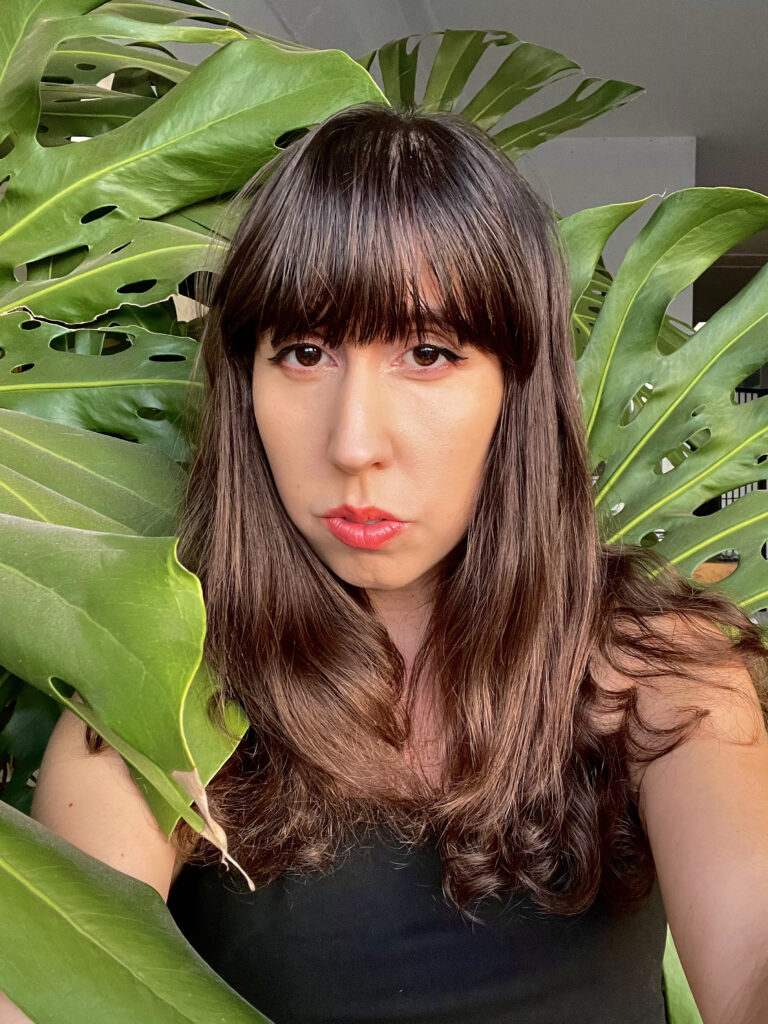
Do you have a favorite film/filmmaker that exemplifies what it means to celebrate and/or properly address what it means to be Indigenous?
Taietsarón:sere: Shaandiin Tome — her short film Long Line of Ladies made me feel all the emotions, a wildly powerful piece of Indigenous pride.
Tiare: I think the Indigenous experience is so vast that it would be hard to summarize it in a single film or single filmmaker. Pasifika and Polynesian filmmakers really speak to me as a Hawaiian, and a lot of the films I’m seeing from Maori filmmakers are really blowing my mind. Generally speaking, there are many parallels between tribes. I’m honestly excited for all the indigenous filmmakers who are making work right now. I feel like there are more and more of us and that our voices are growing and rising together to represent all of us collectively.
If you could create a holiday to celebrate Indigenous communities, what would it be?
Taietsarón:sere: Halloween 2: where we get to dunk on folks who dress up as us for Halloween. Seriously though, I would like to have something beyond just a holiday. Something tactical that can benefit our communities. I don’t know what that is just yet, but I think we’ll get there.
Tiare: Well, I think of how as Kānaka we have Makahiki which is a whole season to celebrate Lono — the god of fertility, rain (rain clouds), harvest — we make offerings to him and it’s a period of celebration [with] feasts and dancing. At least back in wā kahiko (older times) Kānaka weren’t allowed to do labor, but there were games and playful competitions (both physical and intellectual), and this celebration would go on for months — again, a whole season to come together to rest, feast, honor Lono and our ancestors, and strengthen bonds as a community. That’s a proper way to do a holiday.
I don’t think it can ever come down to one day with Native folks, we need days or weeks or months. And Makahiki is still celebrated, but majority Kānaka definitely still have to work during these months. As a filmmaker it’s hard to take even one day off, but I’m not complaining. I try to find time to celebrate while making the work. Film festivals that showcase indigenous excellence feel like a celebration. I think of the months or years that go into making our films and when we get to see them on the big screen with community — it’s definitely a celebration. Of that work, of our stories, of our resiliency. I think of the film festivals I hope to go to one day like Maoriland, Rotorua, and Imaginative which I’ve heard amazing things about; nations coming together to celebrate their storytelling champions. I’m excited for the Hawai’i Shorts programs at the Hawai’i International Film Festival and where I’ll be having the world premiere of my short film, Pō’ele Wai. There’s a lot of work still before me but when it screens and I get to see my friend’s films screen and other Kānaka filmmakers it will be a celebration, garanz.
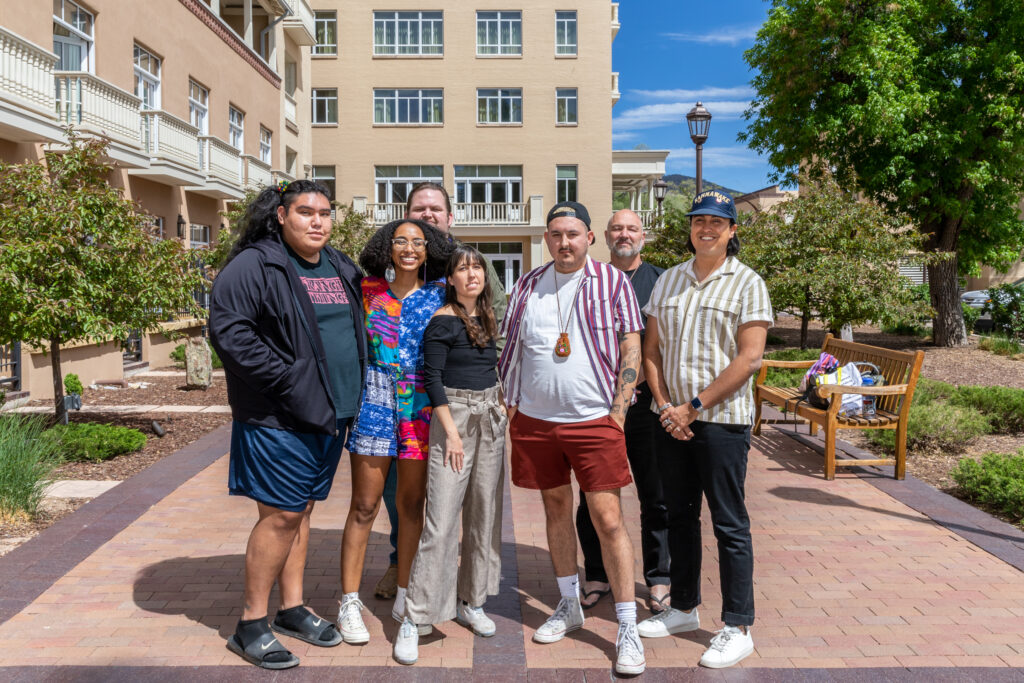
Taietsarón:sere ‘Tai’ Leclaire (Kanien’kehá:ka & Mi’kmaq)
Taietsarón:sere ‘Tai’ Leclaire is a former writer and actor on RUTHERFORD FALLS — the Peacock comedy by Sierra-Teller Ornelas, Mike Schur, and Ed Helms. He’s Kanien’kehá:ka (Mohawk) and Mi’kmaq from the Mohawk Territory of Kahnawà:ke. His script “How To Deal with Systemic Racism in the Afterlife” awarded him THE 2022 SUNDANCE INSTITUTE NATIVE LAB and also THE INDIGENOUS LIST on THE BLACK LIST in partnership with Illuminatives, and The Sundance Institute. He’s currently in development and making his directorial debut with his first short film HEADDRESS – coming in 2023. He’s a former house performer at UPRIGHT CITIZENS BRIGADE THEATRE New York. He’s also performed at festivals around the country including Austin Sketch fest and Philly Sketch Fest. He’s currently repped by 3 ARTS ENTERTAINMENT and UTA (UNITED TALENT AGENCY.)
Tiare Ribeaux (Kānaka Maoli / Kānaka ‘Ōiwi)
Tiare Ribeaux is a Kanaka ‘Ōiwi filmmaker and writer. Her films involve a magical realist exploration of spirituality, labor, and the environment, drawing upon the structure of dreamworlds and Hawaiian cosmology to critique both social and ecological imbalances. Her films use visual narrative storytelling and components of science fiction and fantasy to reimagine both our present realities and future trajectories of lineage, place and belonging. Born and raised on O’ahu, she is interested in telling stories that include the modern indigenous and diasporic experience. She has shown work both nationally and internationally, and has won numerous grants and awards including the Sundance Native Lab Fellowship and Interdisciplinary Program Grant, two New and Experimental Works Grants from the Kenneth Rainin Foundation, grants from the National Endowment for the Arts, the Doris Duke Foundation, and the Citizen Diplomacy Action Fund, among others. She founded B4BEL4B in 2014 as a platform and community space in Oakland to prioritize critically underrepresented artists in media arts, and has worked as an artistic director there and at various media arts festivals for the past eight years.




